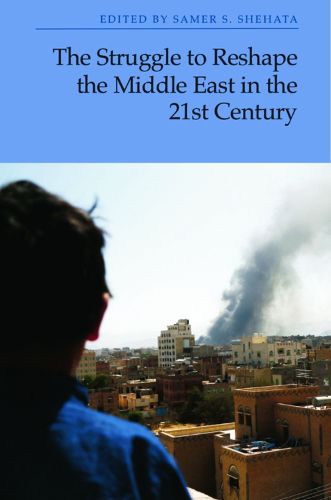Readings Newsletter
Become a Readings Member to make your shopping experience even easier.
Sign in or sign up for free!
You’re not far away from qualifying for FREE standard shipping within Australia
You’ve qualified for FREE standard shipping within Australia
The cart is loading…






The volume examines the causes and consequences of regional turbulence in the Middle East following the 2003 Iraq war and the 2011 Arab uprisings. The Middle East has experienced unprecedented levels of instability and violence during this period including regime breakdown, heightened rivalry and competition, civil and proxy wars, cross border military intervention, refugee flows, and the emergence of violent non-state actors. Following a theoretical chapter analysing the drivers of regional turbulence, leading Middle East scholars investigate the impact of turbulence on the politics of different states and actors in the region. Nine case studies analyse the foreign policies and regional role of the United States and Israel, Iran and Turkey's policies toward the Syrian crisis, and the impact of regional turbulence and intervention on Yemen, Egypt, and relations among Arab Gulf states. The two final chapters examine two new Islamist actors that emerged in the Middle East during this period: Sunni militant groups in Iraq and Syria and the new Salafi political parties and their foreign policy orientations.
$9.00 standard shipping within Australia
FREE standard shipping within Australia for orders over $100.00
Express & International shipping calculated at checkout
The volume examines the causes and consequences of regional turbulence in the Middle East following the 2003 Iraq war and the 2011 Arab uprisings. The Middle East has experienced unprecedented levels of instability and violence during this period including regime breakdown, heightened rivalry and competition, civil and proxy wars, cross border military intervention, refugee flows, and the emergence of violent non-state actors. Following a theoretical chapter analysing the drivers of regional turbulence, leading Middle East scholars investigate the impact of turbulence on the politics of different states and actors in the region. Nine case studies analyse the foreign policies and regional role of the United States and Israel, Iran and Turkey's policies toward the Syrian crisis, and the impact of regional turbulence and intervention on Yemen, Egypt, and relations among Arab Gulf states. The two final chapters examine two new Islamist actors that emerged in the Middle East during this period: Sunni militant groups in Iraq and Syria and the new Salafi political parties and their foreign policy orientations.